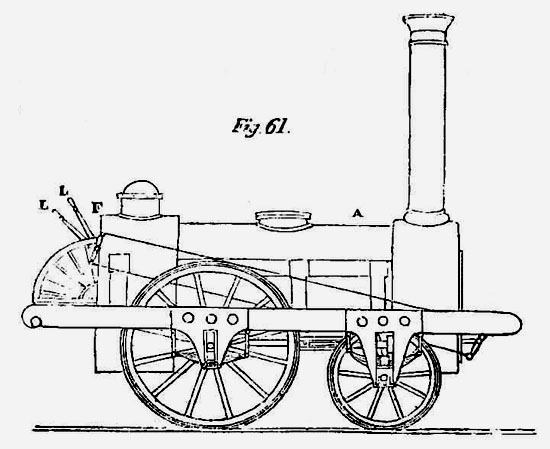Lardner's Steam Engines
Today, some old books help us understand the present. The University of Houston's College of Engineering presents this series about the machines that make our civilization run, and the people whose ingenuity created them.
The Reverend Dionysius Lardner was the English editor of a large set of scientific and technical handbooks in the early 1800s. He called his series The Cabinet of Natural Philosophy. I have two volumes here -- The Steam Engine Familiarly Explained and Illustrated and Hydrostatics and Pneumatics. Mine are American editions published a little later -- in the 1830s.
These books show people reacting to radical changes in technology unfolding right under their noses. Let's compare the 1824 English edition of Lardner's steam engine handbook with the 1836 American edition:
The railroad was brand new in 1824. Eight years later, the chapters on railroad engines -- like the railroads themselves -- had greatly expanded. The American editor also added a whole new chapter on steamboats. It has a nice confident ring to it, because we were ahead of England in taking our engines to sea.
The chapter on fuel economy is fascinating. By 1836 fuel consumption had risen alarmingly. It demanded attention. Natural philosophers were hard at the job of writing the new science of thermodynamics to explain fuel efficiency. Without it this chapter does no better than to recite clumsy rules of thumb. But that very clumsiness represented need, and that need was driving the creation of a new science.
Lardner's interest in power resurfaces in his book on hydrostatics and pneumatics. When it speaks to the motive power of liquids and gases, it clearly responds to the power-hunger of the 19th century. Lardner talks about the old water wheels; but he seems unaware that -- even as he wrote -- water wheels were being made obsolete by the vastly superior water turbine.
Neither book uses any mathematics. We read labored verbal arguments that could have been made so simple with just a little algebra or calculus -- with the mathematics that English and American engineers were just starting to study in school.
The book on pneumatics treats the new technology of flight. Hot-air balloons were 50 years old, and parachutes less than that. The book dwells on the unsolved problem of navigating a balloon -- of taking control of its flight away from the wind and giving it to a person.
Today, these old books teach us something they weren't meant to. Today, they remind us that our lives are being changed by some forces we're wise enough to see -- but by others that will catch us completely by surprise just a few years from now.
I'm John Lienhard, at the University of Houston, where we're interested in the way inventive minds work.
(Theme music)
Lardner, the Rev. Dionysius, Hydrostatics and Pneumatics. With notes by Benjamin F. Joslin, M.D. (from The Cabinet of Natural Philosophy, D. Lardner, ed.). Philadelphia: Carey and Lea, 1832.
Lardner, the Rev. Dionysius, The Steam Engines Familiarly Explained and Illustrated, with additions and notes by James Renwick, LL.D. Philadelphia: Carey and Hart, 1836.
This episode has been greatly revised as Episode 1718.

(From The Steam Engine Familiarly Explained, 1836)
A state-of-the-art locomotive in 1835